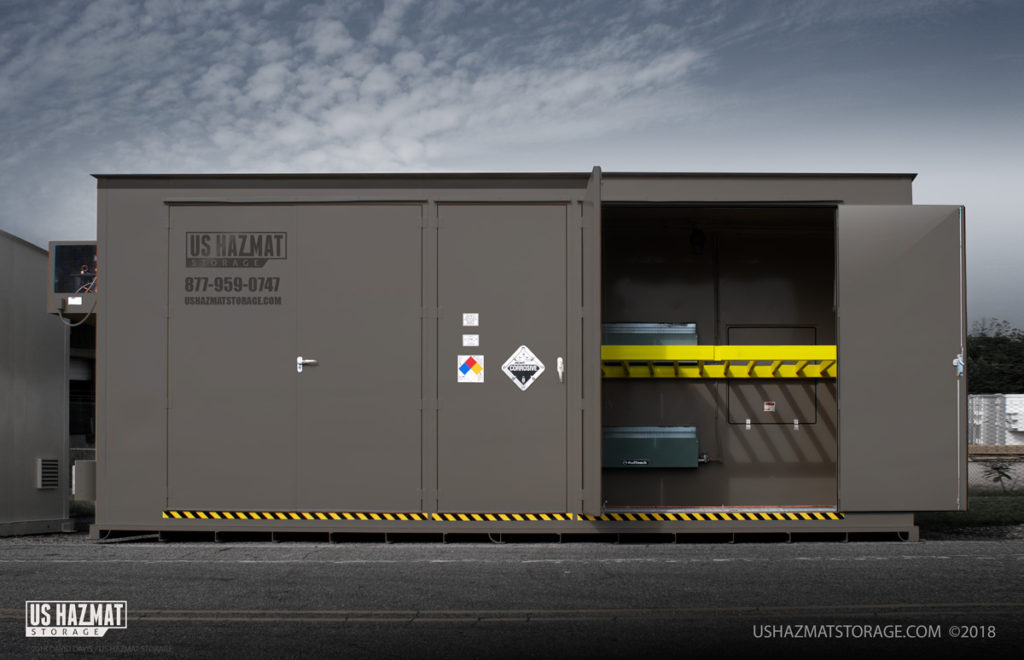Mankind is soaring to new heights. Since the dawn of aviation, we’ve continued to race skyward and beyond as civilization seeks to conquer the final frontier of sky and space.
Never has modern engineering witnessed such monumental growth in the fields of aviation and aerospace. We now stand at the precipice of interplanetary exploration – a feat that we previously thought was lightyears away. Even terrestrial aviation has seen unprecedented growth. Supersonic jets are once again poised to reenter the stratosphere and civilian-backed rocket programs are providing a fresh perspective to our planet’s place in the solar system.
Protecting our skies tomorrow with a U.S. Hazmat Storage locker today

But what are the ancillary costs of such advancements? Mechanical prowess comes at a steep price. Building and servicing jets and spacecraft can send operating costs sky high. We aren’t just talking about airplane hangers either. Tools and valuable equipment used in the manufacturing process must be protected. Improperly stored equipment can result in wayward calibrations that could have disastrous effects on airplane manufacturing. Fuels and lubricants must also be treated with care to prevent fire, injury and faulty installation.
So, what are some of the more common items found in aviation engineering that need superior protection? The list is nearly limitless, as aviation engineering is extremely detailed oriented, and good reason. The industry is also diverse and extremely specific. Entire factories and industries focus on turbine engine manufacturing alone. The same can be said for fuselage assembly and electronic navigation manufacturing.
Common hazmat materials in the aviation industry
Here is a list of the more prevalent hazardous materials and chemicals that can be found in almost any sector of the aviation industry.
- Corrosion inhibitors
- Grease
- Lubricants
- Cleaners
- Primers
- Polishes
- Adhesives
- Strippers
- Sealants
- Jet fuel
- Polishes
Tools of the trade
Equipment isn’t your only concern in the aviation industry. Aside from behemoth machining equipment, there is a wealth of smaller hand tools that keeps everything from prop planes to jumbo jets in the sky. Here is a short list of some of those items that require protection.
- Speed handle
- Calibration equipment
- Torque wrench
- Pliers
- Small mirrors
- Screwdrivers
- Sockets
- Allen wrench
- Ball peen hammer
- Flashlight
- Hack saw
U.S. Hazmat Storage can be implemented into any workflow and manufacturing stage
Fortunately, U.S. Hazmat Storage can offer a steel line of fire-rated and non-fire rated storage solutions to accommodate this seemingly endless list of tools and equipment that are associated with aviation engineering.
Almost any of our storage lockers are enough in storing valuable tools and basic cleaners and strippers. We can also offer storage solutions for your more volatiles substances, such as fuels and even adhesives.
Preventing battery fires with U.S. Hazmat Storage
With the rise in alternative energies further solidifying its place in almost every sector of modern engineering, battery storage will likely continue to be a dilemma for the aviation industry, as well. To the bewilderment of larger commercial airlines, single-seat battery powered aircraft will only continue to grow in number. Fledging single-seat flyer enterprises have already experienced their fair share of battery fires and we only suspect that list to grow in the future. Fortunately, we have a line of storage lockers that can safely prevent these types of fires.
Depending on your work site needs, our flammable chemical storage buildings are available in two-hour and four-hour fire rate protection. Regardless of the job’s conditions, our storage solutions allow operations to work your storage requirements seamlessly into any work site. Temperature and climate-controlled storage can also accommodate a variety of storage needs. Whether you’re storing Lithium-ion (Li-ion), Nickel Cadmium (Ni-Cd), Nickel-Metal Hydride (Ni-MH), or Lead-Acid batteries, flammable material storage compliance along with climate controlled storage is a necessity to ensure workplace safety and to protect your company’s investments.
Protecting airports, planes and passengers

U.S. Hazmat Storage lockers aren’t just for the assembly line. The same product line that can protect tools and personnel while isolating and separating dangerous materials can be used for similar purposes at modern airports. Our fire-rated storage lockers would be ideal for storing fuels, lubricants and other small hand and power tools that can be found at any airport nationwide.

